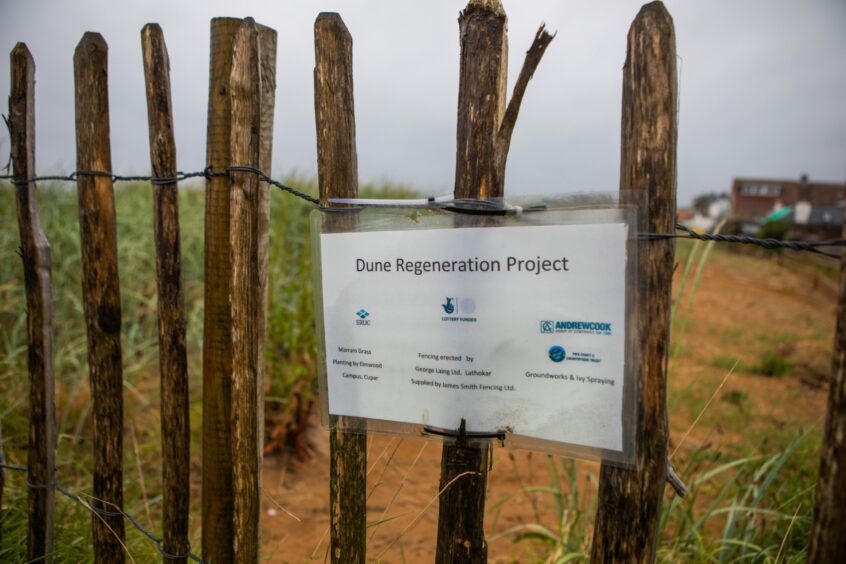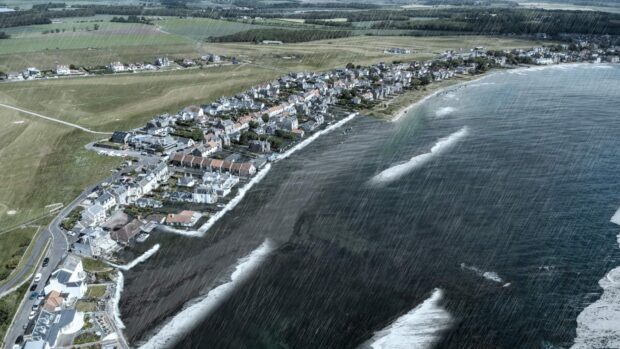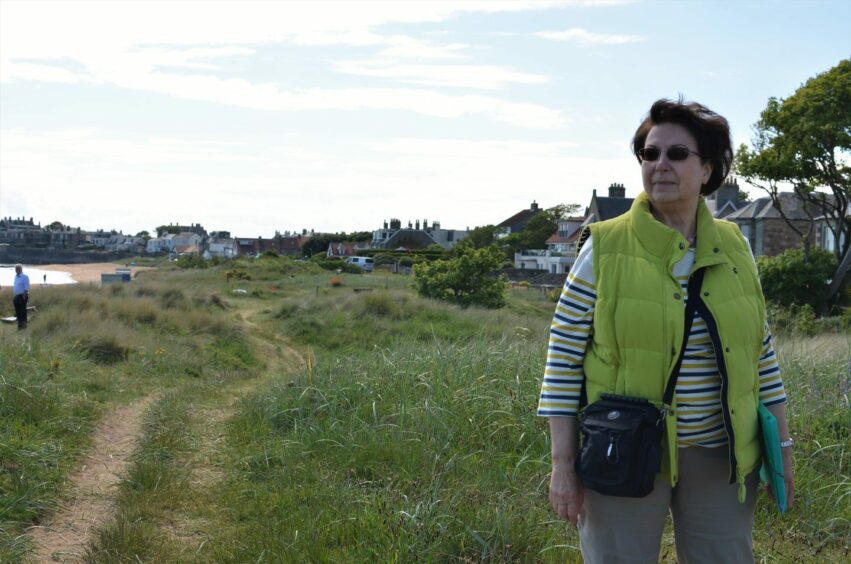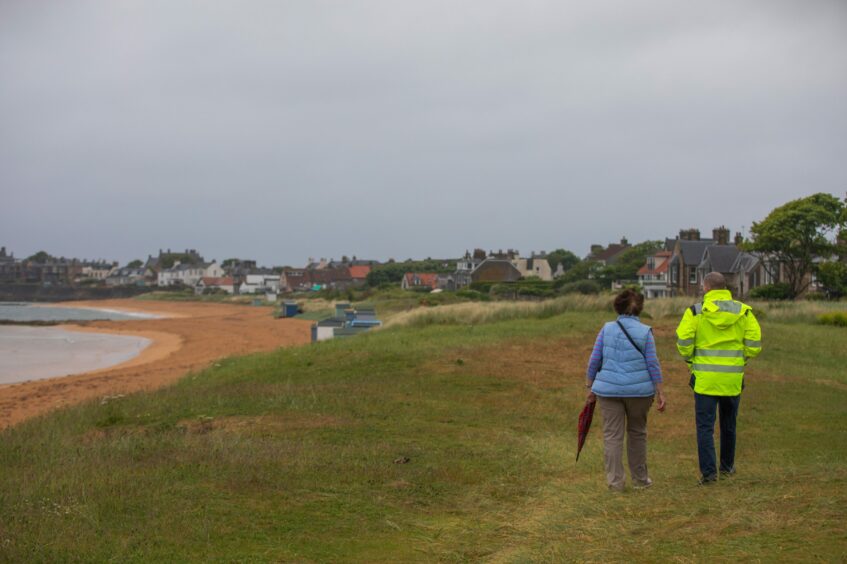Generations of holidaymakers have fond memories of the beach at Elie and Earlsferry…
But the landscape is changing.
By 2100, the situation could be devastating.
Local campaign to protect Elie coastline
Local resident Angela Anderson leads the beach group of Elie and Earlsferry Community Council.
Back in 2014 she listened to Robbie Blyth from Fife Coast and Countryside Trust give a presentation about the future of our coastline.
It was a lightbulb moment.
“I thought, my goodness, this is something I haven’t thought about.”
The retired senior medical officer is used to leading projects.
And she saw saving her local waterfront as another challenge.
“I listened to Robbie when he gave a talk and thought ‘I’m looking for something to do.'”
In November 2016, the beach group commissioned a survey to find out how best to manage the beach’s sand dunes – the key to protecting properties from the incoming tide.
‘I’d rather have sand in my garden than the North Sea’
Since then, local people have helped clear ivy from the dunes.
And students from SRUC Elmwood have transplanted marram grass to the areas at risk of erosion.
The result is a thriving dune system.
In places.
Robbie Blyth is head of operations at Fife Coast and Countryside Trust.
He says not all residents are fans of marram grass.
In some places the marram grass has even been mown down.
But Robbie has a stark warning for those preferring to see the sea, instead of sand and beach grass, from their windows.
“This is obviously getting mown within an inch of its life and you can see the erosion.
“If they’re not careful they will see the sea in their living room.
“I’d rather have sand in my garden than the North Sea.”
We made attempts to contact owners of properties at the waterfront – many of which are second homes.
The response was mixed.
An owner of a property where marram grass had been cut down declined to offer a comment.
However, she expressed scepticism at the science behind the Dynamic Coast predictions.
Another, who rents out her property, said she had actively supported the work at the dunes, even employing a gardener to plant marram grass at her own expense.
Could the next storm take out the dunes?
Elie and Earlsferry are among the coastal areas highlighted as vulnerable by the Dynamic Coast research project.
Our visualisations are based on the Dynamic Coast findings, but it must be noted they are our own interpretation of the data.
In nearby St Andrews, dunes are also being used as a ‘soft engineering’ approach to holding back the tide at an iconic beauty spot.
A concrete sea wall in these locations doesn’t bear thinking about.
Rock armour would be an expensive and unsightly addition to the East Neuk holiday destination.
And it’s not an option on the table for Elie.
“It has to be soft engineering for areas like this,” says Robbie.
The ‘soft engineering’ option of maintaining dunes is also employed at Broughty Ferry, St Andrews and in Angus.
Dunes last line of defence in a potential flooding of Elie
Robbie says the dunes are vital because they are the last line of defence against a storm surge – when high winds drive seawater towards the coast.
“If Storm Arwen was blowing inland and at high tide, the impact on this community would have been far worse than a few felled trees.”
He adds: “If we can enhance these dunes, there’s never a guarantee that we can stop the tide from coming in.
“But we are doing everything reasonable.”

Robbie says another benefit of these natural flood defences is they can regenerate after suffering storm damage.
But getting people on board has had its challenges.
“For the majority of the properties here, the curtilage extends out to the dunes so it’s their land.
“All these people have access rights. It can sometimes lead to conflict and challenges.
“Unlike the West Sands where there is one owner, there are multiple owners, and it’s making the case for it.
“It’s a huge challenge.
“It’s a difficult conversation but it’s a conversation that has to be had.”
Credits
Words and interviews by Aileen Robertson
Visualisations by Chris Donnan
Graphics by Gemma Day
Scrollytelling by Emma Morrice, Joely Santa Cruz and Lesley-Anne Kelly
Drone photography by Steve Brown
SEO by Jamie Cameron
Special thanks to Dynamic Coast













Conversation